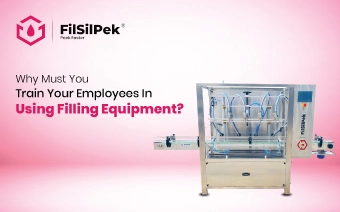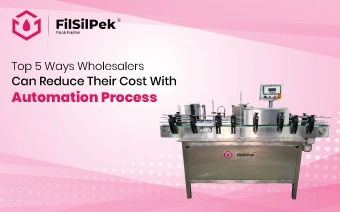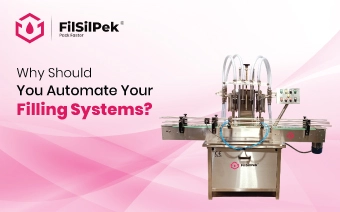Top Trends to Watch in the Automated Filling and Packaging Industry in 2026 and Beyond
The automated liquid filling and packaging industry is entering a new phase of transformation. Driven by tightening regulations, sustainability mandates, labor constraints, and the need for greater operational agility, manufacturers are rethinking how they design, deploy, and maintain their filling systems. For businesses handling liquids whether beverages, chemicals, cosmetics, or pharmaceuticals keeping pace with these changes is no longer optional; it’s essential for staying competitive.
At Filsilpek Group, as a dedicated manufacturer of automated liquid filling machines, we work closely with clients across industries to solve real-world production challenges. Through these partnerships, we’ve identified clear, actionable trends that are already reshaping the way filling lines operate and will continue to do so through 2026 and beyond.
In this article, we’ll explore six key developments that matter most to liquid packagers: sustainability-driven machine design, modular scalability, hygienic engineering, precision fluid handling, seamless line integration, and remote diagnostics. These aren’t speculative ideas they’re practical shifts influencing purchasing decisions right now.
1. Sustainability Is Now a Core Design Requirement Not an Add-On
Gone are the days when “eco-friendly” meant optional upgrades. Today, sustainability is built into machine architecture from the ground up.
- Lightweighting compatibility: Bottles and containers are getting thinner and lighter to reduce material use. But these designs can be less rigid, causing jams or misfeeds in older fillers. New-generation machines now feature adaptive grippers, servo-controlled handling, and real-time pressure adjustments to manage fragile containers without breakage.
- Reduced product loss: Even a 0.5% overfill across millions of units adds up. Advanced fillers now use mass-flow or volumetric feedback loops to maintain ±0.1% accuracy cutting waste and improving margins.
- Energy-efficient drives: Servo-electric filling systems are replacing pneumatic or hydraulic ones, reducing energy consumption by up to 40% while offering finer control.
2. Modularity and Scalability Are Non-Negotiable
Companies can’t afford to shut down production for weeks to install a new line. The trend is toward plug-and-play modularity:
- Machines are designed with standardized interfaces (mechanical, electrical, and data) so you can add capping, labeling, or inspection modules later.
- Scalable throughput some systems can run at 30 bottles per minute during testing and scale to 300+ during full production with minimal reconfiguration.
- This flexibility is especially valuable for contract packers and startups launching multiple SKUs with limited floor space.
3. Hygienic Design Meets Global Compliance Standards
Regulatory bodies like the FDA, EU GMP, and 3-A Sanitary Standards are tightening requirements. Modern liquid fillers must support cleanability by design:
- Fully welded stainless-steel frames with no crevices
- Sloped surfaces to prevent liquid pooling
- Tool-free disassembly for quick cleaning
- Integration with CIP (Clean-in-Place) and SIP (Sterilize-in-Place) systems
For industries like pharmaceuticals, nutraceuticals, and premium beverages, these features aren’t just “nice-to-have” they’re mandatory for market access.
4. Precision Through Advanced Fluid Handling
Not all liquids behave the same. Viscous serums, carbonated drinks, foaming shampoos, and volatile solvents each pose unique challenges. The latest fillers address this with:
- Product-specific nozzles: Anti-drip, bottom-up (subsurface), or vacuum-assisted fill heads to manage foaming or splashing.
- Temperature-controlled paths: For heat-sensitive products like probiotics or enzymes, maintaining consistent fluid temperature during transfer prevents degradation.
- Real-time viscosity compensation: Some systems now adjust fill speed or pressure based on inline viscosity sensors critical for batch consistency in cosmetics or chemicals.
5. Seamless Line Integration via Open Architecture
Isolated machines create bottlenecks. The future belongs to interconnected lines that share data and respond in real time:
- OPC UA and Ethernet/IP protocols allow fillers to talk directly to upstream (e.g., mixers) and downstream (e.g., labelers, palletizers) equipment.
- If a capper slows down, the filler can automatically reduce speed to prevent backup without human intervention.
- This level of coordination reduces downtime and improves OEE (Overall Equipment Effectiveness), a key KPI for plant managers.
6. Remote Diagnostics and Predictive Support
Unplanned downtime costs thousands per hour. Leading manufacturers now embed IoT-enabled monitoring into their machines:
- Vibration, temperature, and cycle-count sensors track component health.
- Cloud dashboards alert operators to potential issues like a worn pump seal before failure occurs.
- Filsilpek’s support team can access anonymized machine data (with permission) to troubleshoot, update software, or optimize settings remotely cutting service visits by up to 60%.
Summing it up
These trends aren’t distant possibilities they’re already shaping purchasing decisions in 2025. Companies investing in new or upgraded filling systems are prioritizing future-proofing: machines that adapt to new products, meet stricter environmental rules, integrate smoothly, and minimize waste.
At Filsilpek Group, we engineer our automated liquid filling machines with these exact principles in mind combining robust mechanical design with intelligent, user-focused automation. Whether you’re filling water, essential oils, industrial lubricants, or liquid supplements, the right equipment today sets you up for efficiency, compliance, and growth tomorrow.
Ready to modernize your filling line with technology built for 2026 and beyond?
Contact our experts at [email protected]for a customized consultation.
Why must you train your employees in using filling equipment?
Investing in advanced filling equipment is one of the biggest steps manufacturers take to improve speed…
Top 5 Ways Wholesalers can reduce their cost with automation process
Look if you’re a wholesaler still filling bottles or slapping labels by hand….
Why Should You Automate Your Filling Systems?
Walk into any factory still running manual filling lines and you’ll see the same thing: tired eyes, scribbled notes….


